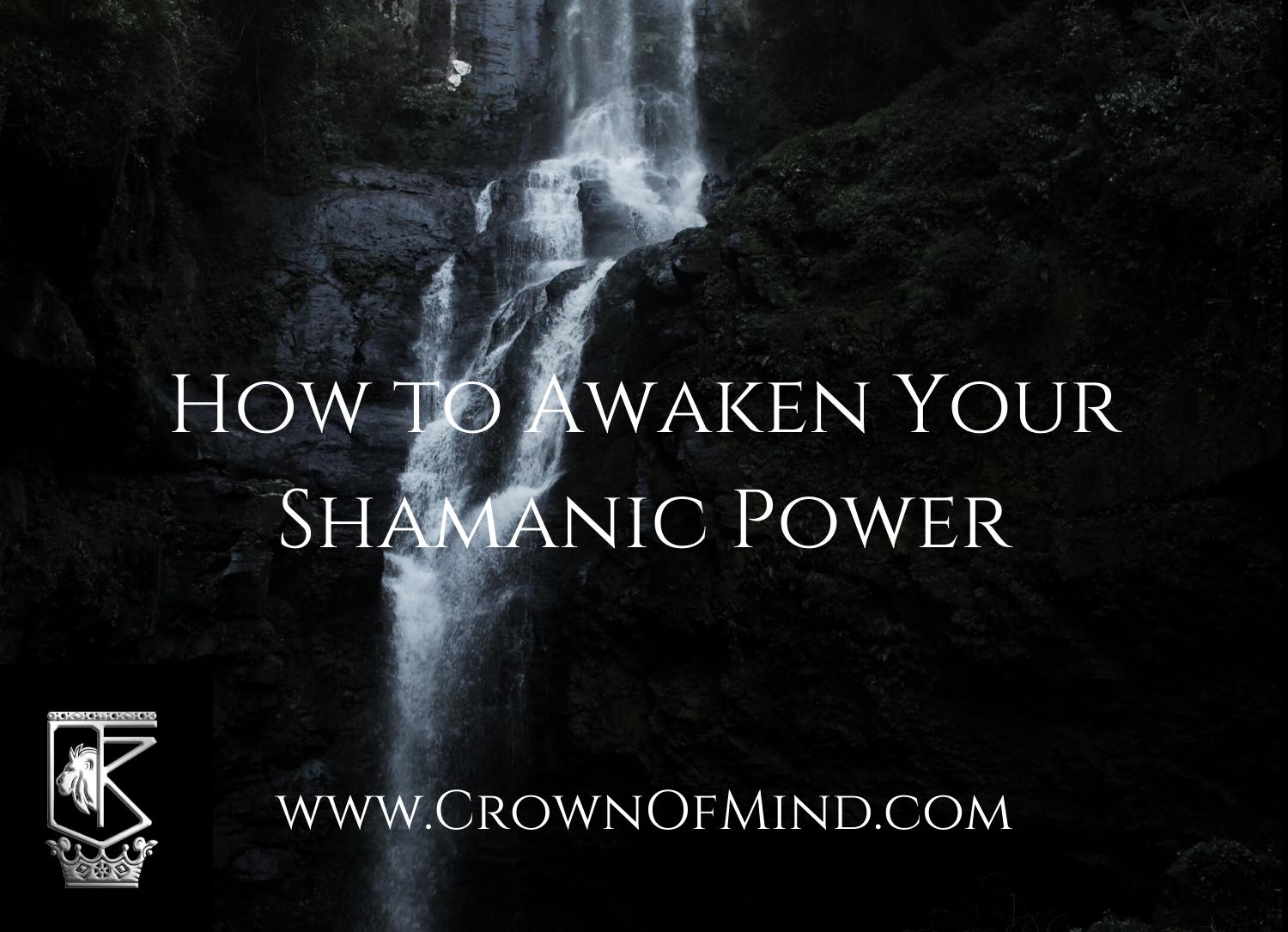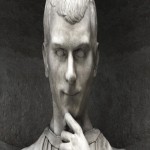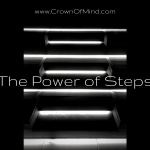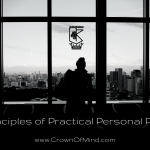Google “shaman” and you will see a range of images: people wearing animal skins, drums, people wearing what seems like war paint, bones, smoke and sage, people wearing elaborate garments or sometimes nothing at all. To the uninitiated eye, these pictures might seem spooky, out of this world. Practices to avoid.
But just what is a shaman?
A shaman is not:
- A crazy person who needs to be imprisoned
- A person who’s lost all sense of rationality
- A cannibal
- Someone who worships evil
- Spooky
A shaman is traditionally known as a medicine man or woman, a healer with the ability to access the spiritual (inner) realm, obtain knowledge, and use this knowledge to assist others in their healing. Like a natural healer, the shaman may possess several methods of working with plant medicine, crystals and the elements to facilitate healing. But different from the herbalist, a shaman infuses ritual and deep meditative, trance-like states to enter a different consciousness realm. In most cases, the “client” does not journey with the shaman during this time, and through communication beforehand, the shaman is able to gain a deeper understanding of the person’s plight, whatever may be ailing him/her.
When in this state that we call “shamanic,” she meets with various beings, in sometimes-exotic environments, and navigates these spaces in search of wisdom that can be shared with the client. Animals, spirits, plants and unique beings are all encountered and at the helm of the seasoned shaman who knows how to travel The World Tree.
The shamanic path according to the Celts is a challenging one, and this is why the shaman is considered the Wounded Healer (Conway); by going through her own inner journeys, treading dangerous waters within, she becomes a healer by being able to heal herself. By understanding what it takes to heal, she becomes more equipped to apply her powers in service of others.
While shamanism is not a religion, the practice can be incorporated into any, and it (perhaps not under the term “shamanism”) spans the globe, dating back millennia from Europe to Asia to ancient Egypt.
Who Becomes a Shamanic Healer?
To become a full-fledged shaman by title is to be a healer for community, and this often involves much time in solitude. An indigenous method, when a child is identified as having shamanic potential, he may be separated from the family and placed on the journey as a “test” to see if this potential is true. We find the popular Vision Quest and also Rite of Passage known to many indigenous communities from this practice.
As the select go through this healing process, they are faced with fears, insecurities; they must all be met and integrated before deep healing takes place. Throughout the shaman’s life, she will face her challenges with greater strength and ability to transmute them. The visceral, severe nature of this testing can appear brutal to some, but it is done with the understanding that a true shaman /medicine man or woman will be entrusted with responsibility as the healer in the community. Just as we must be able to love ourselves first to authentically love another, the shaman must be able to experience true self-healing to heal another.
Are Shamanic Solitude Tests for Everyone?
Fortunately, it is not necessary for everyone to experience an environmentally intense rite to access shamanic power (maybe if the goal is to become a healer for the community). Contemporary technology, cultural blending and transmission of these ancient practices make shamanism much more accessible to non-indigenous people. And our very makeup primes us for being able to perform the feat. There are several qualities within us that make us naturally shamanic (they of course need to be developed):
- Imagination: this is the power to conjure images in the mind’s eye. We use this power whenever we hear, see, smell, taste or touch something that is not physically present. Largely connected to the claire powers (audience, sentience, cognizance, etc.). Imagination enables us to literally build a world without having to lift a physical finger, and it is this power that’s ripened in a seasoned shamanic healer when journeying.
- Thought Forms: as magical beings, we acknowledge thoughts are things, they have substance and the ability to “split” from us or take a more independent form. We use this power when we create story characters or ponder on any idea for extended time. The idea gains strength, clarity, can be “seen” with more detail mentally. The shaman encounters numerous beings within a journey or can specifically seek out one to communicate with. These beings are thought forms accessed within the shaman’s inner universe.
- An Astral / Spiritual Body: the ancient Egyptians called this the Ka or mer-Ka-ba, and other traditions may refer to it as the light body, or the rainbow body. When we dream, we tend to have less-deliberate, more random journeys and communication and this is possible because of our ability to travel using this layer. With practice we can become more intentional about what we form in this space. A shamanic healer may enter extremely deep trance states and differ in the kind of travel we’re used to seeing, because they can move, dance, jump around or become enveloped in the vibrations of a drum or fire.
These are three of many primary abilities we all have naturally and it is quite possible we’ve journeyed without realizing it was such. For example, it might not always be an extravagant vision, but a silent walk in a park and you found yourself entranced in quiet dialogue with a part of you, and some understanding poured through that you could apply in a practical way.
Practical Understanding for Developing Shamanic Power
For the purposes of deliberately inducing a shamanic journey so that it becomes another magical tool for your belt, we will:
- Design your shamanic world
- Find your guide
- Sharpen your senses
The Worlds
There is incredible detail about the various worlds in shamanic journeying, but the basic idea is there are 3 worlds with which you can travel: the middle, the upper and lower realms. The middle realm is similar to the earth plane and for your imagination you may experience that as individual as each one of us is. The lower world is where you will experience physicality but the beings here may have greater powers, may be mythical (dragons, unicorns, talking frogs, etc.) and can perform feats otherwise not done in the middle world. The upper realm houses the more ethereal beings including angels, spirits and other forces that may operate without a physical body.
These realms are entered through what is called The World Tree, and once you have a conceptualization of what it looks like to you, choosing the direction to go (up, middle or low) becomes simpler.
You may also create a sacred space, a special location that you first enter the shamanic world from. It could be a room, an open space, a cliff; you may choose that space most comfortable for your soul. From that sacred space you are able to exit through a door and that leads you to the World Tree.
Note: While not always emphasized, the Celtic shamanic path does emphasize the importance of cleansing yourself before entering the tree. If you imagine lush greenery surrounding this massive ancient tree, you may also envision a golden well with the purest of water. You can look into this water to see your reflection. Conjure two rocks, one in each hand. Make one your guilt and the other your fear. Throw them both into the golden well. Allow the weight of those two emotions to disappear. Now you’ll enter the tree courageous and without regret.
The Guide
A guide is a being that assists you while in the worlds. You may call it your friend but it is more than that; it will challenge you if you’re trying to hide. It helps you find direction and may give you knowledge that can shake you up for your own good. Because you aren’t journeying for someone else, only healing for yourself, your guide may be a blatant speaker or deliver information to you symbolically. There may be times when you meet a being and the communication makes no obvious sense. It will be up to you to discern what the information means in your waking life.
Guides can come in all forms, shapes and sizes and you may receive multiple. If you do not currently have a guide, here is how to find one:
Enter your meditative state and see yourself in your sacred space. In your sacred space, envision a door. The door is made of metal. Open it and walk through, and you end up in a forest. There are trees everywhere, bushes and grass in abundance. You walk through this beautiful forest until you reach its edge. Before you flows water, a river. It runs far and wide. On the other side is a small mountain, and you know you have to reach there. Instead of walking over the water or swimming, you float. Eventually, you fly, over the water, and see yourself gradually approaching the mountain. As you reach the mountain, you now fly higher with the intention to reach the top. Notice all of the details, the rocks and crevices, spaces where others might’ve climbed. Now you’ve reached the top, you set down on its surface. Standing in front of you is a being. Its back is turned. As you walk closer, it turns to face you. What does it look like? Is it a person? Man or woman, boy or girl, animal or insect, or something else entirely?
Then, you ask the question, “Are you my guide?” It will respond in the affirmative if so. If not, you may return to the forest, fly back and go to your sacred space. Perform the journey again.
Once you’ve connected with your guide, this being you can find in all of your journeys and sometimes you may find the guide connecting with you outside the shamanic state.
The Senses
There may be times when you feel like you’re making the experiences up, and that is just fine. Remember the natural powers we have; imagination can feel like it’s fake but make no mistake, thoughts are things, energy is substance and there is nothing in the world truly “fake,” as in it doesn’t exist. The moment we conceive it, it becomes real at different frequencies.
Do you find it difficult to experience the details? That too is just fine. Senses in the astral body need to be refined just like our senses when we’re first born physically. The more practice you have visiting The World Tree and entering the realms, the sharper your spiritual senses become, the more you will hear, touch, taste, smell and see.
Most importantly, have fun! Accessing your shamanic power will give you a real taste of the deep potential you have. There’s a universe living inside of you and shamanic power can help you realize it.
Reference
Conway, D.J. (1995). By Oak, Ash & Thorn: Modern Celtic Shamanism. Published by Llewellyn Publications.










